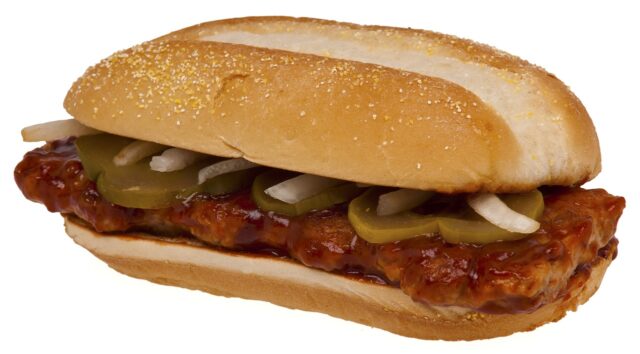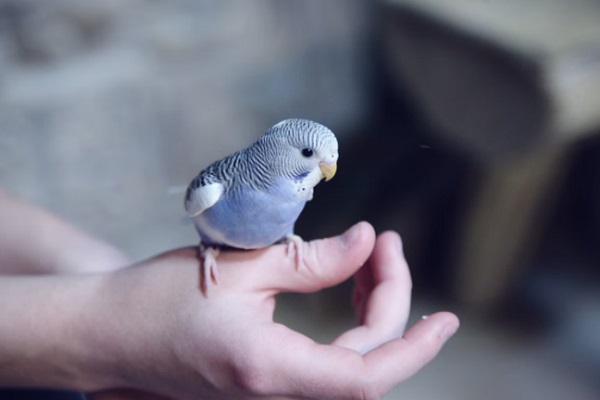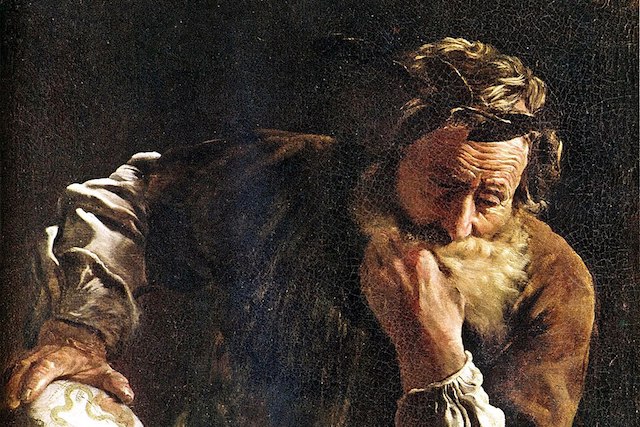We spend a lot of time studying the history of culture and language, war and art, and for good reason. But one area of history that often gets overlooked is the history of food. The things we eat often have fascinating and unexpected origins. This may not make the food taste better or worse, but it can add a new dimension to it once you understand how and why someone created that delicious snack you’re eating. So grab your Cheetos and McRib, and let’s dig in…
10. Good luck charms owe their origins to Cheerios and Circus Peanuts
Everyone knows Lucky Charms because whether you eat them or not, they taste magical and have been that way ever since they were first made. introduced in 1964 . For nearly 60 years, Lucky the Leprechaun has been telling children to eat cereal mixed with magical marshmallow figures. In 2018, they sold them on $283.4 million , so things seem to be going well. So where did the brilliant idea of adding weirdly crunchy marshmallows to cereal come from?
Lucky Charms can thank two things for their existence: Cheerios and Circus Peanuts. Product Developer John Holahan was a big fan circus peanut in the 1960s. If you're not familiar, they're a peanut-shaped marshmallow that's somewhere between the crunchy marshmallows you get in a box of Lucky Charms and the soft marshmallows you'd use for S'mores.
Back in 1963, Holahan was working on some new cereal ideas and chopped up the circus peanuts in a bowl of Cheerios. He was so impressed with what he had done that he presented it to the powers that be, and within a year, Lucky Charms were on store shelves.
9. Velveeta was invented to save bad cheese
Unless you are serious about food, you may not know that some foods carry a certain snobbery. Things like caviar and lobster certainly carry a certain mystique or reputation. But foods like cheese are much more nuanced. There are people who take cheese very seriously and treat it the same way people treat wine. Cheese can be serious business. Donkey pule cheese, for example, costs about $600 per pound .
Because cheese is taken so seriously, you will find people who make fun of cheaper cheeses. They may even claim that something like the cheese slices you find at the grocery store are not cheese at all. This is not entirely true, but it misses the interesting history of these cheeses.
Velveeta cheese, known for its ability to melt easily and make creamy sauces, is a processed cheese. In the early 1900s, cheese factories were losing a lot of money when blocks of cheese broke and pieces fell off. This waste was practically useless, so Emily Frey found a way combine them with whey and make a cream cheese product. Is it "real" cheese? Yes and no. Just as a hamburger is not a steak, processed cheese is not real cheese. But the basic ingredients are basically the same.
8. Chicken nuggets were born from wartime rations.

In 2018, the Americans ordered 2.3 billion chicken nuggets. This doesn't include the nuggets people buy in grocery stores, or the nuggets consumed in any of the other 194 countries in the world. So there are a lot of nuggets eaten around the world. If you're a fan, thank the person named Robert S. Baker .
Baker taught food science at Cornell University, and the American food landscape changed after World War II. During the war, food was rationed, and the only protein that wasn’t rationed was chicken. So Americans were up to their eyeballs in chicken wings for years. When rationing ended, chicken sales plummeted. People were sick of it. They’d been eating it for years, and it was a hassle to prepare. It was usually sold whole, so it took a long time to cut it up or prepare it.
Baker came up with several ways cooking and processing chicken to make them new and interesting. Nuggets were one such idea. They used meat that was often thrown away anyway and could withstand freezing and frying. This saved a lot of money and time, and also breathed new life into the poultry industry.
For his part, Baker didn't patent the idea. He wanted it to be generic. That allowed other companies to make their own products, and when the fight against red meat began in the 1970s, chicken nuggets became a big hit.
7. Pez was intended to discourage smoking.
Perhaps the most famous candy in the world, Pez dates back to 1927. It was invented Edward Haas III , and it used a new process to press the mint flavor into the candy, which both saved money and preserved the flavor. The Pez dispenser was still a few years away, so they were simply packaged like regular candy.
Haas inherited the company from his father, and perhaps didn't need to invent new candies to keep the business going. But he was inspired to make Pez not just as another treat, but with a purpose. He was an anti-smoking advocate, and he thought his new candy could help stave off smokers' cravings. It was his mint alternative to smoking , which he believed could also prevent overeating.
These days, the company sells billions of Pez each year in more than 90 countries. But there's no word on whether it's effective in stopping smoking.
6. Dippin' Dots were born out of an experiment in livestock feed production.
They call Dippin' Dots the ice cream of the future. The product hit the market in 1988, and since then it has become something of a niche treat, available in places like amusement parks and movie theaters because you can't store it properly in most commercial settings.
Dippin' Dots are the result of a flash-freezing process in which the liquid ice cream mixture is frozen with liquid nitrogen. This gives it its signature tiny little bead shape. It must be stored at ultra-cold temperatures of -40 to maintain its integrity, and in places like grocery stores and your home freezer, that's not possible.
Ice cream wasn't on the menu when the product was invented. Microbiologist Curt Jones tried improve cattle feed . The same process that makes tiny balls of ice cream makes tiny balls of all sorts of things. Jones just thought he'd do something same with ice cream might be cool. While the product lacks commercial viability on a large scale, it has found use in places that can maintain the temperature to hold it.
5. The ploughman's lunch was invented to sell cheese.
Have you ever had a ploughman's lunch? It's a very British thing, as you can tell from the spelling, but it's definitely something Americans can get behind. It's very much like a charcuterie board with some emphasis on cheese and bread. It can also include various meats, such as hard-boiled eggs, salad, fruit, condiments, and so on. It's served cold and is fairly easy to put together. Most pubs offering food, you'll be offered a solid ploughman's meal for less than ten pounds.
Despite the rustic nature of both the food and the name, which suggests that it has been a farmer's staple for many years, the actual reason for the ploughman's lunch — marketing. Back in the 1960s, the UK Milk Marketing Council teamed up with the BBC to help promote cheese. It was here that first mentioned Ploughman's Lunch in an attempt to boost cheese sales, particularly in pubs.
Obviously, people have been eating bread and cheese together for centuries, but the idea of trying to sell it as a specific thing with that specific name is only about 60 years old.
4. Sailors invented fruit punch because beer was going bad.
Fruit punch is a staple drink for many kids. It's a super red, super sweet concoction that's arguably all fruit. However, its origins are pretty swarthy and not as healthy as you might think.
Being a sailor used to be an incredibly stressful job. In the 1600s, you had to worry about pirates, storms, scurvy, and bad beer. The longer you were at sea, the worse your beer got. If you've ever had stinky beer, you know it's not pleasant. So sailors needed alternative drink Fruit punch was the answer.
The first punch recipe dates back to 1638 year and consisted of "aqua vitae (mostly strong alcohol), rose water, citrus juice and sugar." Since alcohol, especially rum, was extremely hard to drink neat at the time, punch made it more palatable. Basically, they took very strong and potent spirits and tried to mix them with a softer wine.
At sea, citrus helped prevent scurvy. Back home, it became a fashionable drink, with the wealthy showing off their massive punch bowls at social events. Alcohol-free versions were soon created, using more juice to spread the appeal, and the modern fruit punch was born.
3. The McRib was invented because McDonalds didn't have enough chicken.

The McDonald's McRib is one of the most unique fast food products in history. It has become like the Bigfoot of fast food, appearing randomly and only for short periods of time, challenging fans to track it down while they can before it disappears again.
The McRib is made to look like ribs, although the patty is boneless. It is, however, pork, and its scarcity has made it a cult favorite. The Simpsons even made an episode parodying its appeal. Ironically, it only exists because chicken shortage .
As mentioned earlier, Americans love nuggets. When they hit the market in the late 70s, it led to a chicken shortage. So the McRib was invented as alternative to chicken , to keep customers happy. In reality, it was never that popular, but the nature of its disappearance and reappearance made it desirable, and from there the legend grew.
2. "Pink Lemonade" is a circus accident
Has anything bad ever come out of the circus? Aside from clowns, animal cruelty, and exploitation of people with disabilities, that is. The circus can also lay claim to pink lemonade, a summer staple that's almost like regular lemonade, only pink.
Normal lemonade has a very long history. You can find sweetened lemon drinks , dating back centuries. A simpler modern lemonade, made with just lemon, water and honey, was discovered in Paris in 1630. The first mention of pink lemonade in print dates back to 1879, when the drink is associated with the circus, the place where it was first presented.
Oddly enough, there are two stories explaining the origins of pink lemonade. Both are accidents, but one is more repulsive than the other. In one version, circus worker Henry Allott accidentally dropped red cinnamon candies into a vat of lemonade and sold it anyway.
In the second version, circus worker Pete Conklin emerged from the water while making lemonade. He grabbed a nearby laundry tub that was being used to wash clothes. pink tights , and used the dirty water for washing instead.
1. Cheetos were a byproduct of a feed mill cleaning process.
In 2017 sales Cheetos have exceeded 1 billion dollars , so it's safe to say they're a popular snack. But the history of cheese curls, the generic term for any of these puffy, Cheetos-like snacks, is curious. Technically, they were never intended to be eaten by humans. There's hardly any food at all.
The cheese curls came from a pet food company called Flakall Corporation . An animal feed factory was grinding corn, and sometimes the machine would get stuck. To clean it, workers would run wet corn through it. When the wet corn heated up inside, it would turn into puff pastry.
Remember, these were never meant to be human food. But some hard-working workers thought the puff pastries looked delicious and tried them. Edward Wilson, an employee at the factory, took some home and added seasonings . This is how the cheese curl was born.













Оставить Комментарий